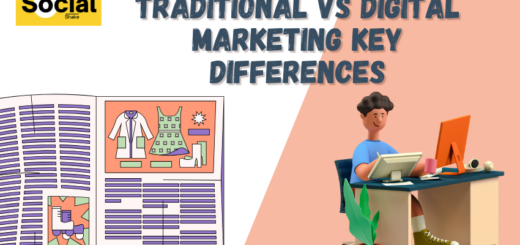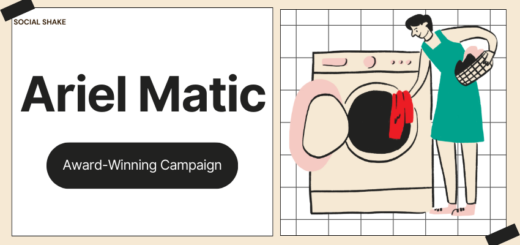Organic vs Paid Social Media: Key Differences & Best Strategy
Introduction to Organic Social Media
Focusing on organic social media is crucial for any brand’s success. Organic social media involves creating and sharing content that resonates with the audience, encouraging them to engage naturally without paid promotions. The key lies in crafting engaging and contextually relevant content. In the organic space, content is king—the better and more valuable your content, the more it will attract and delight your audience.
To excel in organic social media, your content should be so compelling that it naturally drives users to interact through likes, shares, comments, or views. It’s all about sparking genuine engagement by understanding your audience’s interests and delivering content that adds value to their social media experience.
Image content: Content is King – High-quality, engaging, and relevant content is essential for organic growth.
Focus on Engagement: Create content that naturally drives likes, shares, comments, and interactions.
Audience-Centric: Understand your audience’s preferences and deliver content they relate to.
Difference Between Organic and Paid Marketing
Organic and paid social media marketing are two powerful strategies with distinct purposes and approaches. Here’s a detailed comparison:
1. Definition and Approach
- Organic Social Media:
Involves reaching your audience naturally without advertisements. It relies on regular posting, engaging content, and active interactions to attract and retain followers. Growth happens through shares, likes, and word-of-mouth among users. - Paid Social Media:
Involves investing money in advertisements to reach a targeted audience quickly. It uses advanced tools for precise targeting and ensures your content gets visibility beyond your organic reach.
2. Purpose and Goals
- Organic Social Media:
- Builds brand awareness and trust over time.
- Nurtures strong, authentic relationships with followers.
- Focuses on long-term audience engagement and loyalty.
- Paid Social Media:
- Achieves immediate results, such as driving website traffic, leads, or sales.
- Amplifies brand presence quickly by reaching specific and broader audiences.
- Ideal for time-sensitive promotions and campaigns.
3. Cost
- Organic Social Media:
-
- No direct financial cost to post or engage, making it budget-friendly.
- Requires significant time, effort, and consistency to maintain visibility and engagement.
- Paid Social Media:
-
- Requires a dedicated budget, with costs varying based on ad type, audience size, bidding strategy, and competition.
- Campaign budgets can range from small to large, depending on business goals.
4. Reach
- Organic Social Media:
-
- Reach is limited to your existing followers and their extended networks.
- Platform algorithms heavily influence visibility, often favoring paid content over organic posts.
- Paid Social Media:
-
- Ensures extensive reach, including new audiences that are highly targeted.
- Not restricted by algorithms, as ads are designed for maximum visibility.
5. Speed of Results
- Organic Social Media:
-
- Takes time (weeks or months) to build a loyal audience and gain traction.
- Focuses on sustainable and gradual growth over time.
- Paid Social Media:
-
- Delivers immediate results as campaigns go live.
- Ideal for achieving quick wins, such as event registrations, sales, or lead generation.
6. Audience Targeting
- Organic Social Media:
-
- Relies on followers finding and engaging with your content naturally.
- Limited targeting options, mainly depending on natural audience interests and interactions.
- Paid Social Media:
-
- Offers advanced targeting tools based on demographics, location, interests, behaviors, and more.
- Enables retargeting of website visitors and creation of lookalike audiences to expand reach.
7. Analytics and Insights
- Organic Social Media:
-
- Provides basic analytics, such as post reach, impressions, engagement rates, and follower growth.
- Paid Social Media:
-
- Offers in-depth performance metrics, including ROI, cost-per-click (CPC), impressions, conversions, and detailed audience insights.
8. Longevity
- Organic Social Media:
-
- Content has long-term benefits as it remains visible on your profile and contributes to brand authority over time.
- Posts can continue generating engagement weeks or months after being published.
- Paid Social Media:
-
- Results are short-lived and limited to the campaign duration.
- Once the budget is exhausted, the ads stop showing, and traffic or engagement declines.
9. Examples
- Organic Social Media:
-
- Regular Instagram posts, engaging stories, participating in relevant Facebook groups, replying to comments, and posting on LinkedIn.
- Paid Social Media:
-
- Running Facebook or Instagram ads for lead generation, promoting posts or videos to a targeted audience, or retargeting website visitors through ad campaigns.
Conclusion
Both organic and paid social media have unique strengths and should ideally be used together. Organic social media builds a strong foundation of trust and long-term engagement, while paid campaigns can boost visibility, drive quick results, and reach targeted audiences effectively. Balancing these strategies ensures optimal outcomes for any social media marketing plan.



